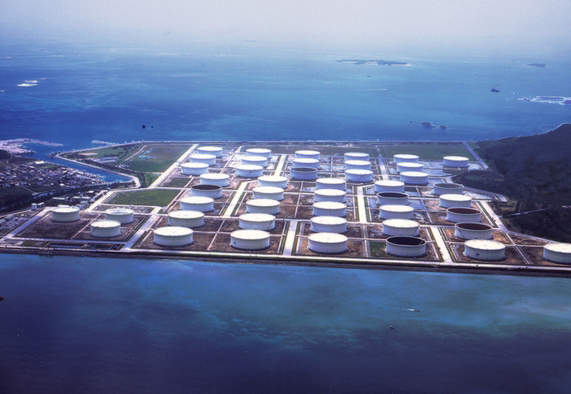
- ARAB NEWS
- 24 Apr 2024

Carla Chahrour
The first import of Middle Eastern oil in Japan started after World War II, when the natural resource-deficient country experienced an increase in oil demand for postwar reconstruction and economic growth.
In order to address oil security and import dependency, the Japanese state supported efforts to increase the ratio of self-developed oil, diversify imports and reduce the reliance on major international corporations.
In 1957, Japan’s endeavor to secure crude oil by developing oil wells succeeded when Saudi Arabia granted a private company in Japan called the Japanese Commercial Oil Company the right to explore oil.
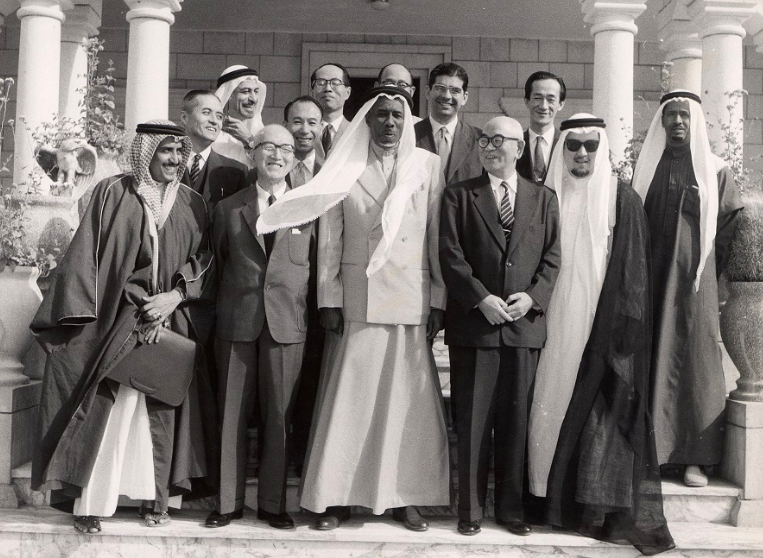 (Al Khafji Joint Operations)
(Al Khafji Joint Operations)The owner of the company which was granted the right to explore at the time was the Japanese national Yamashita Taro, who travelled to Saudi Arabia in December to hold negotiations that were concluded by signing the concession agreement between Saudi Government and Japan Petroleum Trading Company Ltd.
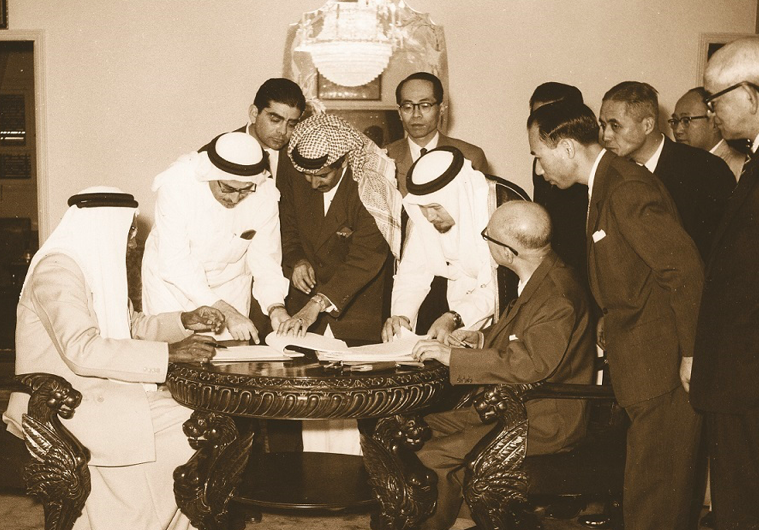 (Al Khafji Joint Operations)
(Al Khafji Joint Operations)After signing the agreement, the Japanese government announced its support for the Commercial Petroleum Company and its drilling projects in the depths of the Arabian Gulf.
In order to complete the process of exploration in the determined period, Taro felt the need to form an alliance with multiple companies in the country and managed to sign with 40 Japanese investors to found a new Japanese Commercial Petroleum company working on oil exploration in Saudi Arabia.
King Saud bin Abdul-Aziz approved the final draft of the agreement with the new Japanese company, named the “Arabian Oil Company” in 1958, which operated the offshore section of the neutral zones between Kuwait and Saudi Arabia, receiving the concession for the exploration from the mother company “Japan Petroleum Trading Company.”
Under the agreement, the Saudi government provided the company with an exclusive petroleum exploration and prospecting license for a period of two years and an exploration concession for 40 years in case oil was discovered in commercial quantities.
The agreement between Saudi Arabia and the Japanese company included an annual pay to the Saudi government during the exploration period, an additional charge if oil was discovered in commercial quantities, as well as the payment of taxes and share of the profits from the commencement of the operations.
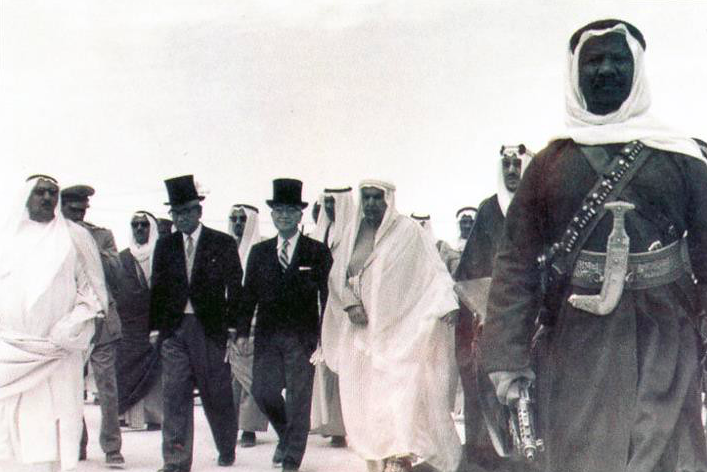 (Kuwait Institute for Scientific Research)
(Kuwait Institute for Scientific Research)In July 1958, the AOC was granted a concession for exploration of oil from Kuwait in the Neutral Zone, which provided the company with an operational boost in that region.
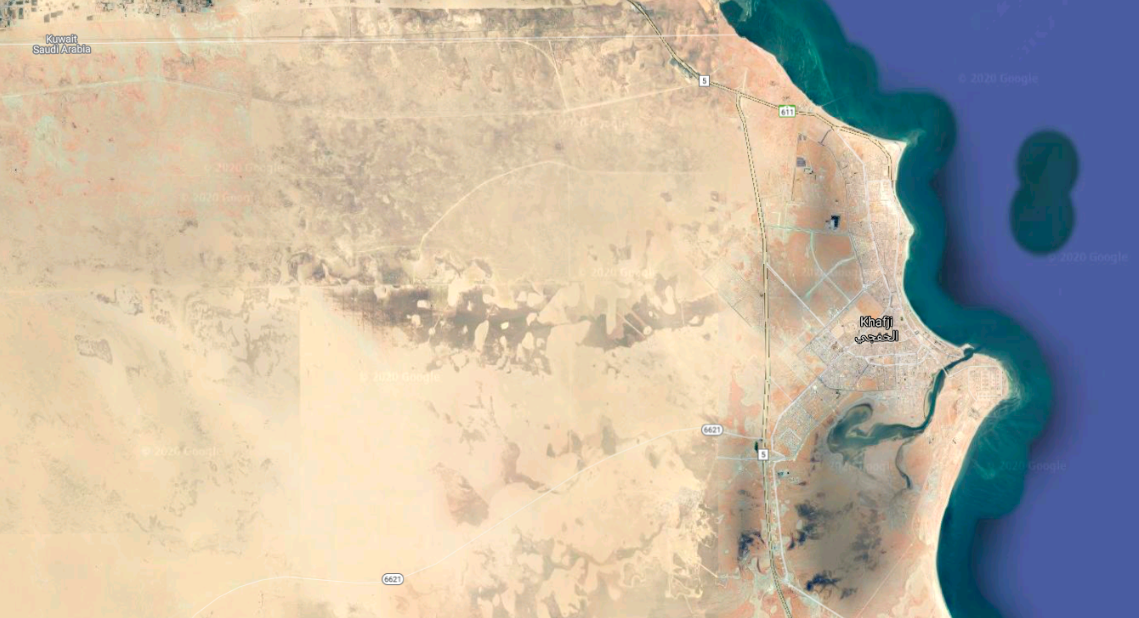 Map of the Khafji oil field in the Neutral Zone between Saudi Arabia and Kuwait. (Google Maps)
Map of the Khafji oil field in the Neutral Zone between Saudi Arabia and Kuwait. (Google Maps)The Khafji oil field was discovered by the Japanese consortium AOC in 1960, which turned out to be one of the richest oil regions in the world, pumping 300 thousand barrels per day, with estimated oil reserve amounting to 60 billion barrels and an untapped natural gas reserve of natural approximately 25 billion cubic meters.
The AOC later became known as the first Japanese oil company to develop oil overseas and Japan’s most successful equity arrangement, producing roughly half of the country’s equity production.
In 2000, the contract between the Japanese company and Saudi Arabia ended as the AOC lost its concession after it refused to succumb to Saudi demands to increase its investment in the project and Aramco took over the Saudi government share in the Neutral Zone in the Arabian Gulf. The AOC’s concession of the Neutral Zone operation now receives only 50,000 barrels per day under a joint development agreement.
Today, Japan is the world’s fourth-largest crude oil importer, at an average of around three million barrels per day. Nevertheless, the country’s sources of imported oil remain undiversified, characterized by the country’s overreliance on the Middle East.
According to oil statistics by the Petroleum Association of Japan in 2015, around 82% of Japanese crude oil is imported from this region. A third of its crude oil is imported from Saudi Arabia and has been the country’s largest crude oil market in Asia for decades, amounting to 34% of the import portfolio, or 1.1 million barrels per day.
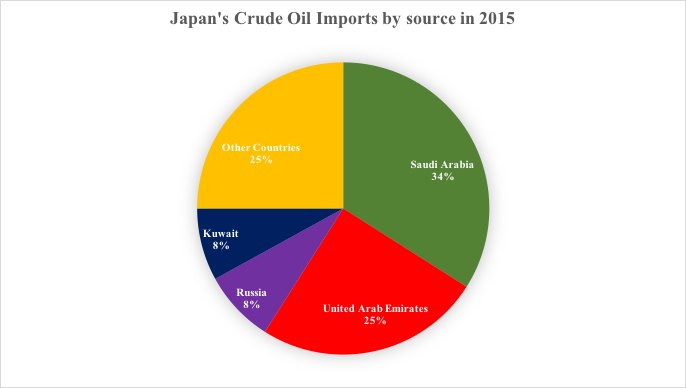 (Petroleum Association of Japan (Oil Statics), Japan’s Ministry of Economy, Trade and Industry, Energy Information Administration.)
(Petroleum Association of Japan (Oil Statics), Japan’s Ministry of Economy, Trade and Industry, Energy Information Administration.)Saudi Aramco has stored oil in Okinawa in Japan since 2011, which enabled Aramco to reduce freight costs and increase shipping flexibility to compete for an increasing share of the Asia-Pacific markets.
This was done in exchange for prioritizing supply to Japan in the event of an emergency, which has been considered extremely important for Japan’s energy security.
Four million barrels of crude oil were first stored in the Okinawa facilities, which were expanded by 2-million-barrels in 2016.
In return of the expansion of the crude storage capacity in Okinawa, Japan continued to get a priority claim on the stockpiles in case of an emergency.
The storage capacity was later raised to 8.2 million barrels and Japan renewed its deal with Saudi Aramco for crude oil storage in Okinawa in December 2019 for another three years.
Moreover, Aramco, which is investing in petrochemical plants and in the enhancement of its own refineries, has completed a petrochemical plant within its joint refinery with Japan’s Sumitomo Chemical in Rabigh.
Saudi Arabia also supplies Japan with liquefied petroleum gas, which is a mixture of propane and butane, which is an important feedstock for the petrochemical industry and is used for cooking as well as a transport fuel.
Despite its leading position in the world economy, third to the United States and China, Japan remains vulnerable to disruptions in its oil supply. Although the country consumes vast amounts of oil, it has no indigenous oil reserves and is dependent on imports from other countries to keep it supplied.
As an energy-importing country, the energy security in Japan is heavily reliant on the security of oil imports from the Middle East, which is why the political and economic stability of the region is a point of major concern.
The oil embargo after the fourth Arab-Israeli war in 1973 implemented by the Organization of Arab Petroleum Exporting Countries highlighted the importance of Middle Eastern oil to the Japanese economy, where an oil crisis accelerated inflation in the country. The Gulf War, triggered by Iraq’s invasion of Kuwait, acted as a second alarming reminder that more than 70 percent of Japan’s oil is imported from the Middle East.
Since then, Japan has been deeply involved in the Middle East peace process since the 1990s and has pursued a ‘Proactive Contribution to Peace’ policy, sending the Self-Defense Force overseas mainly through peace-keeping operations with the UN.
Japan’s active political and economic engagement with the Middle East, have extended beyond oil to include both, government and private ventures, which collectively aim to achieve peace and stability in these countries in order toprevent the risks associated with supply disruption, ensure energy its security and maintain its position as an economic superpower.